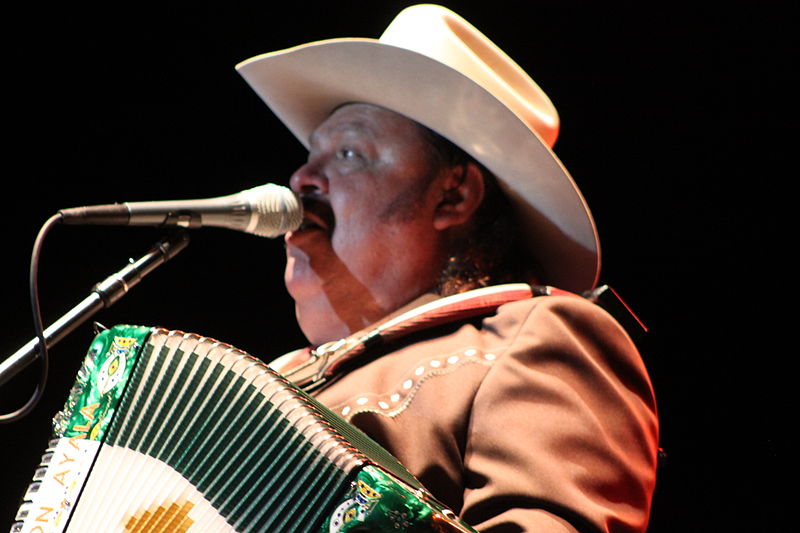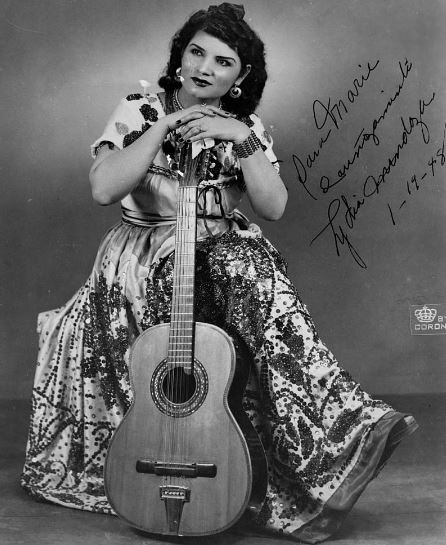Other cultures strongly influenced Tejano music, and its sound has served as Texas’ and its culture’s musical backbone since the early twentieth century. Tejano music has roots that are as diverse and widespread as the people who created it. The main source of Tex-Mex or Tejano music is Mexico, where most Tejano artists are.
Tejano musicians are also heavily influenced by their adopted home culture of Central and South Texas. While most Tejano singers are Mexican, in the United States, Tejano singers such as Los Lonely Boys, Carlos Santana, and female Tejano singers such as Selena, “The Queen of Tejano,” developed their songs and became world famous.
These musicians have also significantly impacted the Hispanic population of Texas and those who don’t identify as Spanish. However, Tejano music is still a hidden genre that many people are unaware of.
In that case, this list highlights some of Texas’ most well-known Tejano artists.
Ramón Ayala
Ramón Covarrubias Garza, also known as Ramón Ayala, is an iconic Mexican and Tejano musician who is one of the genre’s best-selling and most recognized artists. He is best known for his conjunto and norteño music and has sold over 100 albums since his debut in the 1960s, breaking many sales records.
Ayala is also referred to as the King of the Accordion, and for a good reason: most of his music is based on accordion tunes. This aspect of his music has made him a musical force to be reckoned with and a fan favorite in the Tejano music world.
His music has endured the test of time, with his 1960 hits being just as popular as his songs released in the last decade. Ramon Ayala continues to record and release new music, which you can hear on most Tejano radio stations.
La Mafia
La Mafia is yet another old-school Tejano band whose fame has earned them several Grammy awards. This four-time Grammy-winning group formed in Houston, Texas, and began touring throughout Mexico, Texas, and Latin America in the 1980s.
Their music has an original style that has withstood the various changes in the Tejano music industry. La Mafia has been able to create top-charting records since the 1980s, with their album “Estas Tocando Fuego,” which made profits and was released in 1991. They have been a major player in multiple arenas since their inception over the last two decades.
Emilio Navaira
Emilio Navaira, a San Antonio native, is another Tejano music industry powerhouse. He was dubbed the “Garth Brooks of Tejano” because he was one of the few Tejano artists to achieve significant success in Mexico and the United States.
His blend of Country and Tejano music aided him in developing a persona reminiscent of Selena’s blend of Tejano and Pop music. This eclectic mix of genres earned him the male title among the most influential artists in popularizing Tejano music in the late twentieth century.
His death in 2016 left behind a legacy still cherished by friends, family, and fans today. You can still hear his songs played on the radio today because Navaira’s music is timeless for those who hear it.
Mazz
Grupo Mazz is a Tejano band founded by Joe Lopez in the 1970s, who later collaborated with Jimmy Gonzalez. Their music is distinct because it introduced a new sound to Tejano music by incorporating the synthesizer. This electronic musical instrument can imitate instruments such as the Hammond organ, piano, vocals, flute, etc.
Synthesizers in their songs helped them skyrocket in prominence throughout Texas. Their music can now be easily recognized as traditional Tejano music on any radio station, wedding, family gathering, or quinceañera.
Mazz’s music is what present Tejano artists call “old-school,” as it influenced some of today’s top Tejano bands. Their music has been brought down through generations and can still be listened to on the radio today.
Selena
Selena Quintanilla Perez is arguably the most famous Tejano artist of all time. From the early 1980s to the 1990s, she and Los Dinos, her band, dominated the Tejano music charts by fusing the ever-growing Tejano music with pop music.
Selena is well-known today for her eye-catching outfits, smooth dance moves, flawless makeup, and upbeat personality. Before she died in 1995, however, Selena helped Tejano music gain national attention by being the first female Tejano star to earn a Grammy.
Her music was instrumental in propelling Tejano music to national prominence and popularity throughout Latin America and the United States. She is still well-known today, as her legacy lives on through her music, family members, fashion, and fans.
Lydia Mendoza
Lydia was born to a railway mechanic father and a mother who trained her to play the guitar before teaching her to play the mandolin and violin. By the late 1920s, Lydia’s family had formed a band that traveled throughout the Lower Rio Grande Valley, performing in barber shops and restaurants for Mexican-American and Mexican agricultural laborers, launching Lydia’s six-decade-long performance career.
Lydia Mendoza became synonymous with the rural working-class style of canción ranchera, and her songs reflected Tejanos’ social and economic struggles, particularly from the 1920s to the 1950s. Lydia earned the nicknames “La Cancionera de Los Pobres” and “La Alondra de la Frontera” (“The Meadowlark of the Border”). She trained herself to play the 12-string guitar and recorded her first solo record, “Mal Hombre,” in 1934, which they put in the National Recording Registry in 2010.
Lydia emerged as the first interpreter of rural popular border and Tejano music to blossom into a star due to her many successful recordings. She was dubbed the “Queen of Tejano,” and in 1982, she was honored in the National Endowment for the Arts (NEA) National Heritage Fellows’ inaugural class. In 1999, she was given the National Medal of Arts.
The origins of Tex-Mex music can be traced back to ancient times and have evolved. Beginning with the introduction of polka, waltz, and other popular forms of music by early Texans, Europeans, or Tejanos adopted European music as they connected it with the guitar, flute, and drums.
Tejano music began to explode across Texas due to the convergence of all these musical influences. Mexicans blended folk tunes sung in the forms of mariachi and corridos with European and American influences. This type of music genre helped create some of Texas’ best-performing musicians and shape Texas culture.



